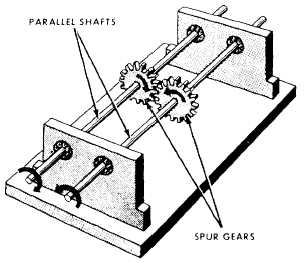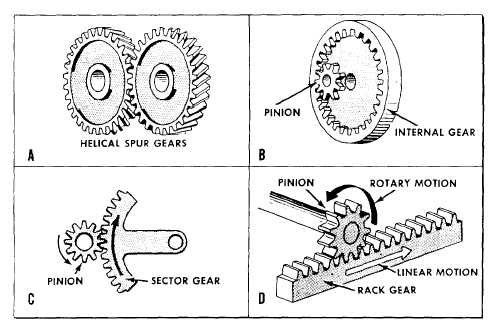Figure 6-2.4-Spur gears coupling two parallel shafts.
one to the other by spur gears. This setup is shown in
figure 6-2.
Spur gears are wheels with mating teeth cut in their
surfaces so that one can turn the other without slippage.
When the mating teeth are cut so that they are parallel
to the axis of rotation, as shown in figure 6-2, the gears
are called straight spur gears.
When two gears of unequal size are meshed
together, the smaller of the two is usually called a pinion.
By unequal size, we mean an unequal number of teeth
causing one gear to be a larger diameter than the other.
The teeth, themselves, must be of the same size to mesh
properly.
The most commonly used gears are the straight spur
gears. Often you’ll run across another type of spur gear
called the helical spur gear.
In helical gears the teeth are cut slantwise across the
working face of the gear. One end of the tooth, therefore,
lies ahead of the other. Thus, each tooth has a leading
end and a trailing end. Figure 6-3, view A, shows you
the construction of these gears.
In the straight spur gears, the whole width of the
teeth comes in contact at the same time. However, with
helical (spiral) gears, contact between two teeth starts
first at the leading ends and moves progressively across
the gear faces until the trailing ends are in contact. This
kind of meshing action keeps the gears in constant
contact with one another. Therefore, less lost motion and
smoother, quieter action is possible. One disadvantage
of this helical spur gear is the tendency of each gear to
thrust or push axially on its shaft. It is necessary to put
a special thrust bearing at the end of the shaft to
counteract this thrust.
You do not need thrust bearings if you use
herringbone gears like those shown in figure 6-4. Since
the teeth on each half of the gear are cut in opposite
directions, each half of the gear develops a thrust that
counterbalances the other half. You’ll find herringbone
gears used mostly on heavy machinery.
Figure 6-3.-Gear types.
6-2



